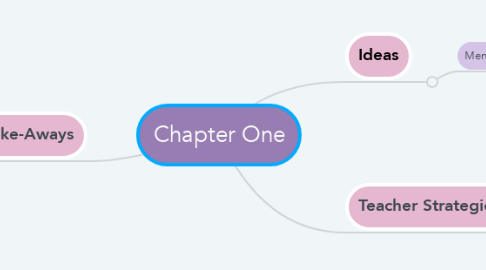
1. Ideas
1.1. Mentor Texts as Models
1.1.1. Including a diversity of mentor texts outside of literature (as well as including literature) is imperative to the real-world purposes of writing. Gallagher uses multiple mentor texts (such as Amazon reviews) throughout the chapters.
1.1.1.1. Diverse perspectives is also incredibly important to include while looking at real world examples and mentor texts.
1.1.1.2. Mentor texts can include both positive and negative texts in order to compare and contrast.
2. Teacher Strategies
2.1. 1 Topic=18 Topics
2.1.1. An interesting, step-by-step worksheet that allows students to break down one complex topic into detailed topics/questions that students can then write a succinct essay on.
2.1.1.1. A great organizer! I definitely had trouble organizing my thoughts as a student and constantly had broad topics, which could be frustrating. This would even be helpful to a university student.
2.2. Real-World Writing Purposes
2.2.1. Helpful template (p. 10) and example (p. 11).
3. Big Take-Aways
3.1. The teacher modelling the process of writing visually and aloud is critical to student learning.
3.1.1. When I took Behaviour Evolution (a psychology course) in my second year of university, a key concept was that some animals learn by imitating a behaviour from a parent or older animal. Modelling how to write is essential when Gallagher says it and seems apparent, but I did not have this experience in my schooling.
